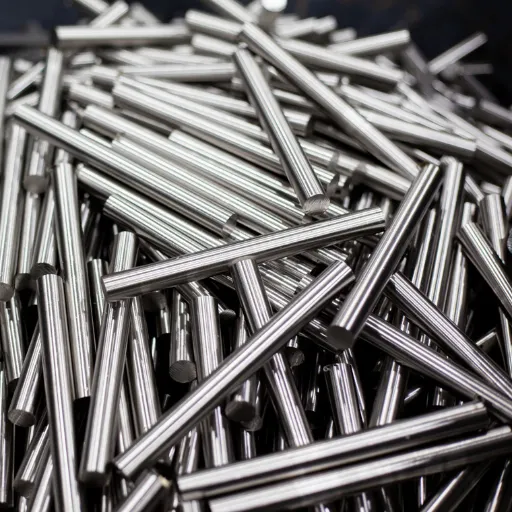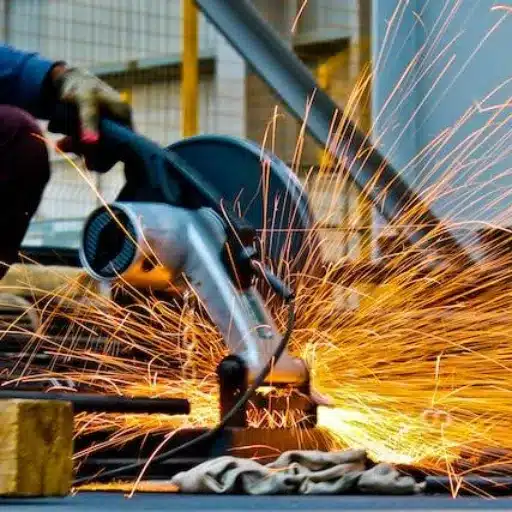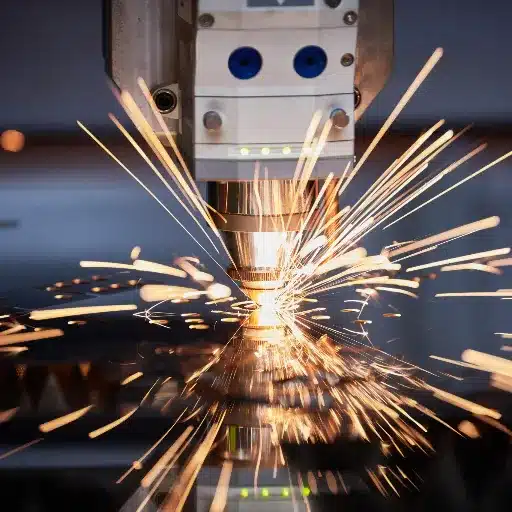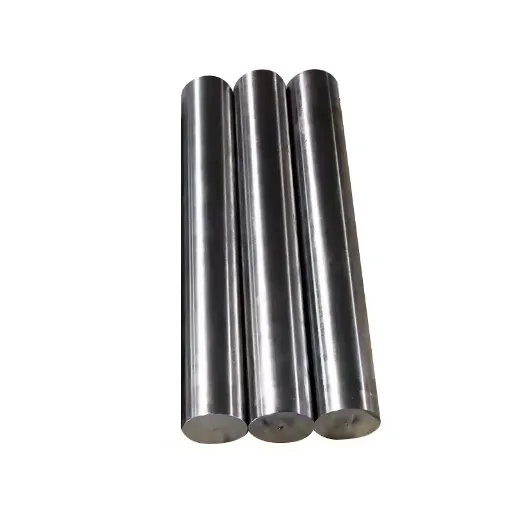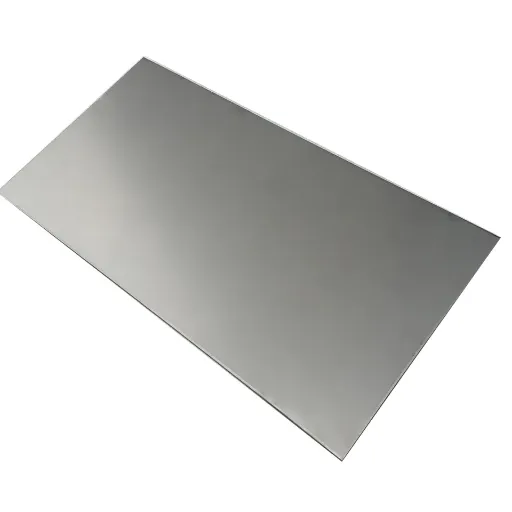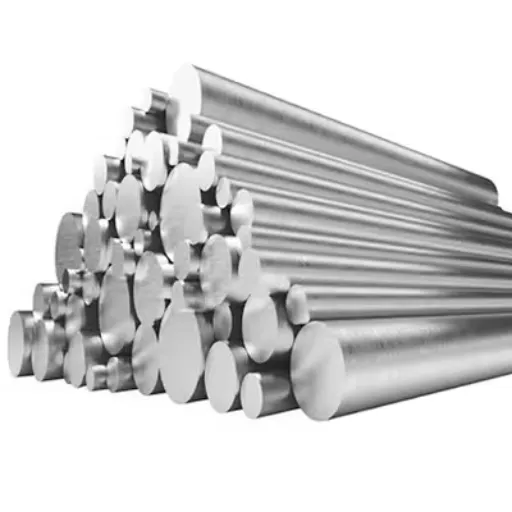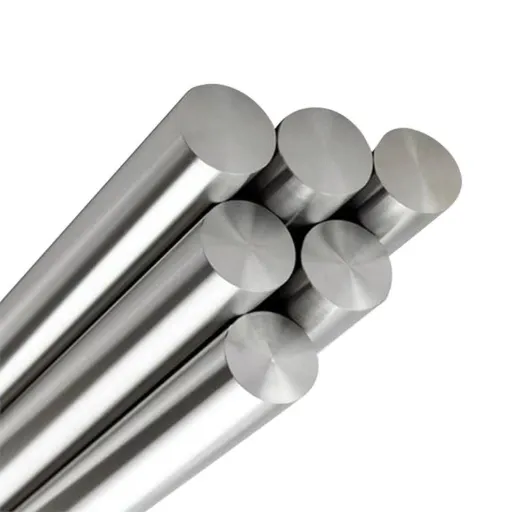Stainless steel finds its fame for its strength, corrosion, and a variety of industrial usage, though all stainless steels are not the same. Among the endless options, we notice Type 347 stainless standing tall with its set of unique properties and applications. This blog dives into the multitude of varieties and grades of 347 stainless steel as well as what factors make it the go-to in harsher environments. 347 stainless steel would suit your specialized project needs from being thermally stable to resisting intergranular corrosion. If material selection happens to be part of your job, be it aerospace, chemical processing, or any other industrial level, a sneak peek into this would certainly offer some knowledge. So stay with us as we take a deep dive trying to join characteristics with Industrial applications!
Introduction to Stainless Steel Type 347
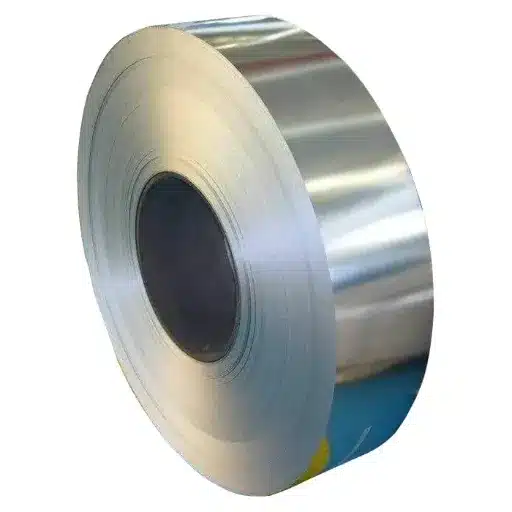
I believe 347 stainless steel is an excellent choice for demanding environments because of its good thermal stability and resistance to intergranular corrosion. Depending on the application nature, the aerospace and chemical processing industries need these characteristics for dependable performance.
What is Grade 347?
Grade 347 stainless steel is an austenitic stainless steel alloy stabilized by niobium (columbium). This provides it with an excellent resistance against intergranular corrosion and hence is well suited for high-temperature applications. It is a chromium-nickel stainless steel that typically contains around 17-20% chromium, 9-13% nickel, minor quantities of carbon, manganese, sulfur, silicon, and phosphorus. The niobium is usually added in concentrations about ten times more than carbon to impart excellent thermal stability.
Key Temperature Range
800°F to 1500°F (427°C to 816°C)
Among all Grade 347 properties, it most notably stands out for its ability for reliable deployment at high temperatures, especially, in the range of 800°F to 1500°F (427°C to 816°C). It minimizes carbide precipitation whose consequences usually include poor structural integrity, and corrosion resistance.
Grade 347 also has very good mechanical properties: a tensile strength of around 515 MPa (75 ksi) and excellent creep resistance. It is these attributes that have really made Grade 347 a preference in aerospace applications, superheater tubes, exhaust manifolds, and chemical processing equipment.
Importance of Grades in Stainless Steel
This choice of grades of stainless steel is crucial in that it ensures the material serves well in whatever it is wasting to be used for. Different grades unfold different balances between corrosion resistance, mechanical properties, and economical considerations, therefore necessitating a choice based on the environmental and particularly operational conditions in which a certain project will be used.
Grade 304
Good corrosion resistance at reasonable price. Contains 18-20% chromium and 8-10.5% nickel. Suitable for general-purpose applications like kitchen utensils and food processing equipment.
Grade 316
“Marine stainless steel” with 2-3% molybdenum. Better resistance to chlorides for coastal and marine applications.
Grade 317
High-strength alternative with superior corrosion resistance in highly acidic or chemical-intensive environments due to higher molybdenum content.
Innovations in compromise are evident beyond the traditional grades with the advent of duplex stainless steels. These duplex grades have a dual-phase microstructure that provides the corrosion resistance of austenitic steels with the strength of ferritic ones, thus ensuring better performance in a demanding condition while also minimizing material consumption and costs.
Comparison With Other Grades
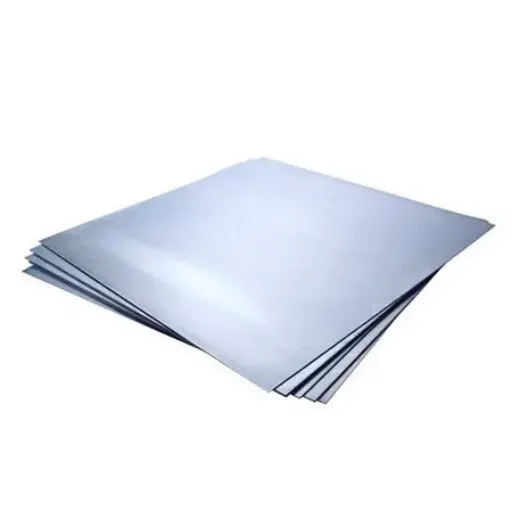
In comparison of Grade 347 stainless steel to other grades, such as Grades 304 and 316, some key differences surface in their performance at elevated temperatures and corrosive actions. Grade 347 stainless steel is better for resisting intergranular corrosion because of the niobium and tantalum content, which should be considered where long-term exposure to elevated temperatures is involved.
| Grade | Key Advantage | Temperature Range | Best Applications |
|---|---|---|---|
| Grade 304 | General corrosion resistance, affordable | Up to 800°F (427°C) | General purpose, kitchen utensils |
| Grade 316 | Superior chloride resistance | Moderate temperatures | Marine, chemical processing |
| Grade 347 | High-temperature stability, intergranular corrosion resistance | Up to 1500°F (815°C) | Aerospace, power generation, heat exchangers |
Grade 304 vs. Grade 347
Grade 304 stainless steel is widely used because of its general corrosion resistance at an affordable price, while Grade 347 does have niobium stabilization. This niobium-fortified Grade 347 is better resistance when maintained at continuous temperatures above 800°F (427°C) in heat exchanger or furnace part environments. Grade 304 is also prone to intergranular corrosion in those high-stress environments, so Grade 347 could be a safer choice in critical applications.
Grade 316 vs. Grade 347
Grade 316 stainless steel, which resists chlorides and chemicals better, by and large supersedes Grade 347 in marine and chemical processing environments. On the other hand, in the matter of high temperature, Grade 347 stainless steel stands better at holding its structure and resisting sensitization. Being more common for power generation and aerospace applications where thermal exposure is the longer one, Grade 347 is thus the preferred stainless steel.
Mechanical Properties of 347 Stainless Steel
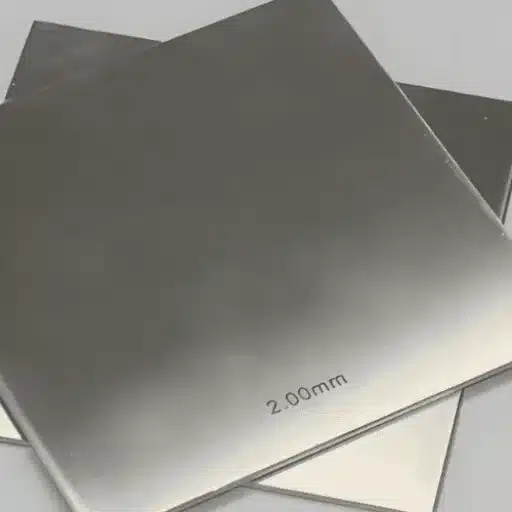
I think the decision between these stainless steel grades, especially Grade 347, will depend on the actual conditions under which the steel will be operating. If we’re talking about heat, corrosive elements, or withstanding some form of intergranular corrosion with age, then Grade 347 is more suitable because of its stability and durability in such atmospheres.
Strength and Corrosion Resistance
347 stainless steel remains highly revered for its alluring mechanical strength coupled with corrosion resistive capacity; it is, therefore, invaluable in challenging applications. This grade of austenitic stainless steel presents tensile strengths generally ranging from 510-710 MPa (74-103 KSI), depending on heat treatment and processing. Its yield strength of around 205 MPa (30 KSI) does well for further structural applications and at temperatures.
Tensile Strength
510-710 MPa
(74-103 KSI)
Yield Strength
205 MPa
(30 KSI)
Max Temperature
1,500°F
(815°C)
When we talk about corrosion resistances, 347 stainless steel stands out against intergranular corrosion since it has niobium (columbium), which stabilizes the alloy by inhibiting the formation of chromium carbides. This stability, in turn, confers greater protection in situations where standard grades would deteriorate due to exposure to acids, chlorides, and high temperatures ahead. Moreover, this stainless steel grade is superb even at a high temperature with oxidizing environments, approximately 1,500°F (815°C), for long-term applications like exhaust systems, heat exchangers, and chemical processing equipment.
General Applications of 347 Stainless Steel
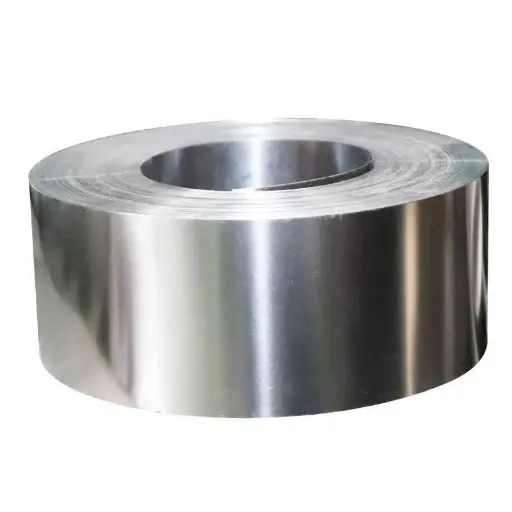
347 stainless steel finds application in areas where high temperature strength and oxidation resistance are required, such as in gas turbines, heat exchangers, and exhaust systems. On account of its excellent welding characteristics as well as the capability of staying in extreme and severe conditions for prolonged periods, it finds application in aerospace and power generation industries.
Uses in Aerospace Industry
347 is an important stainless steel in the aerospace industry because of its excellent resistance at elevated temperatures and to intergranular corrosion. The alloy is used in engineering systems and components for very high-temperature exposure. Thus, it is extensively used in the aerospace industry for manufacturing aircraft exhaust systems, high-temperature components, and turbine parts. The alloy performs well in most aerospace-related applications because it retains mechanical strength and does not oxidize up to 1500°F (815°C).
- Aircraft Exhaust Systems: Handles high-temperature exhaust gases effectively
- Turbine Parts: Maintains structural integrity under thermal stress
- Complex Geometries: Excellent weldability and formability for intricate designs
Interrupted with niobium additions that stabilize and allow 347 stainless steel to stand carbide precipitation upon welding or heating for extended periods, this feature is very much required in aerospace components subject to cyclical thermal stress to prevent deterioration of the materials with time. Industry reports and papers have stated that mostly because of its weldability and formability, it is the preferred material to be used in aerospace structures for complex geometries.
Applications in Chemical-Processing Industry
347 stainless steel is the most commonly used material in the chemical-processing industry due to its superior resistance against intergranular corrosion as well as its ability to survive high-temperature environments. So 347 stainless steel stands as an important construction material for processing equipment, including heat exchangers, reactors, and pressure vessels, wherein acidic and corrosive materials are faced on a daily basis. Its excellent resistance to oxidation up to 1500°F (816°C) make it ideal for applications involving sulfuric, nitric, and other mineral acids.
Heat Exchangers
Reactors
Pressure Vessels
By virtue of the very high creep and stress rupture properties of 347 stainless steel, added reliability can be assured in the high temperature conditions encountered in chemical plants. The presence of niobium in its composition stabilizes the alloy against the precipitation of carbides during welding, which is a big advantage for long-term service in corrosive environments subjected to thermal cycling. This ensures safety and durability of the critical infrastructure. The material has also been increasingly accepted in those applications that demand strict compliance to environmental and operational standards, establishing it firmly as the material of choice in chemical production.
Advantages of Using 347 Stainless Steel
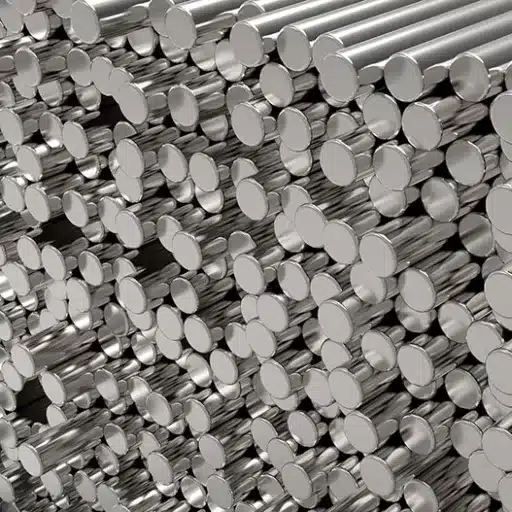
347 stainless steel in my opinion is a highly reliable material with properties resisting corrosion and high-temperature environments. Addition of niobium stabilizes its structure so that it can be subjected to severe thermal stresses and chemical exposure. This is the material I choose for any project in which safety, longevity, and strict industrial standards are the basis for decision.
Advantages Over Other Stainless Steel Grades
347 stainless steel has many advantages when compared to other popular stainless steel grades; hence, these advantages become important in the realm of high temperatures and corrosive environments. Primarily, it gives better resistance to intergranular corrosion due to niobium addition, which inhibits chromium carbide precipitation, even after long exposures to temperatures in the critical range of 800–1500°F (427–815°C). This is especially favorable for such long-term stabilizing purposes as in chemical processing, heat exchangers, and power generation.
🌡️ Superior Temperature Resistance
Maintains durability up to 1500°F (816°C) operational temperature, outperforming grades 304 and 316 under thermal cycling conditions.
🔧 Enhanced Weldability
Eliminates the need for post-weld heat treatment, saving time and money in manufacturing and repairs.
💪 Superior Mechanical Properties
Maintains or exceeds yield strength and tensile strength compared to grades 321 and 304, especially under prolonged stresses.
🛡️ Cost-Effective Reliability
Minimum maintenance costs and maximum reliability for critical infrastructure projects in harsh environments.
Besides 304, also 347 stainless steel imparts a higher durability level under high-temperature conditions; that is, up to 1500°F (816°C) of operational temperature. Likewise, because it is stabilized, it also bests 316 grade as far as oxidation resistance is concerned as it assures the least material deterioration under thermal cycling conditions. Indeed, there have been reports on the mechanical properties of 347 stainless steel sustaining and being least affected by scaling after long-term high-temperature exposure when compared to 304 and 316 grade stainless steels.
In addition, its special composition gives it a unique combination of anti-corrosive properties, high-temperature resistance, and good structural stability, making it an obvious candidate for severe industrial environments. It can withstand a very harsh chemical and thermal milieu, thereby guaranteeing minimum maintenance costs and maximum reliability for the welfare of critical infrastructural projects.
Reference Sources
-
SteelPro Group
- URL: https://steelprogroup.com/stainless-steel/grades/grade-347/
- Why Reliable: This source offers an in-depth analysis of Grade 347 stainless steel, including its composition, properties, applications, and processing methods. It is a trusted resource for manufacturers and engineers.
-
Shalco Blog
- URL: https://www.shalco.com/blog/austenitic-stainless-steel-347-the-complete-guide-to-high-temperature-performance-and-cost-effective-solutions
- Why Reliable: This blog provides a comprehensive guide to the high-temperature performance and cost-effective solutions of Grade 347 stainless steel, making it a valuable resource for industrial applications.
-
Ulbrich Stainless Steels & Special Metals
- URL: https://www.ulbrich.com/alloys/347-stainless-steel-uns-s34700/
- Why Reliable: Ulbrich is a well-known supplier of stainless steel and special metals. Their page on Grade 347 stainless steel includes technical specifications, applications, and mechanical properties, ensuring accurate and reliable information.
Frequently Asked Questions (FAQs)
Grade 347 stainless steel is an austenitic stainless steel containing niobium, said to improve its resistance to intergranular corrosion. It is usually employed in high-temperature environments and offers corrosive resistance, toughness, and strength, which make it applicable in other areas including oil and gas.
Grade 304 and Grade 347 stainless steels, being of austenitic types, have one major difference: 347 has augmented corrosion resistance because of its niobium addition. Grade 304 is more typically used for general application, whereas 347 sees its use primarily in high-temperature conditions where its stability becomes a matter of concern.
Yes, often in aerospace applications due to its unique combination of very high strength and corrosion resistance. Due to its ability to withstand very high temperatures and its unique physical properties, it is highly favored for components exposed to harsh environments.
Common stainless steel grades are Grade 304, Grade 316, and Grade 430. Each grade is specified for particular applications, while Grade 347 is preferred under high-temperature and corrosive environments because of its enhanced toughness and stability.
Grades such as 410, 420, and 440 fall under martensitic stainless steels. They have a high strength and hardness and thus suit applications where wear resistance is desired. However, these steels tend to be somewhat poor in corrosion resistance as compared with austenitic grades such as 347.
Summary
When it comes to actual hard-working situations, Grade 347 stainless steel ensures long-term reliability even under adverse conditions meeting the standards under ASTM A240 and ASME SA240 with its combination of durability, heat resistance, corrosion prevention. Grade 347 would definitely be a material of choice for any high-risk project.

